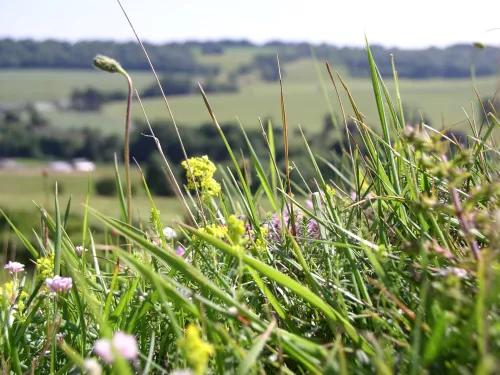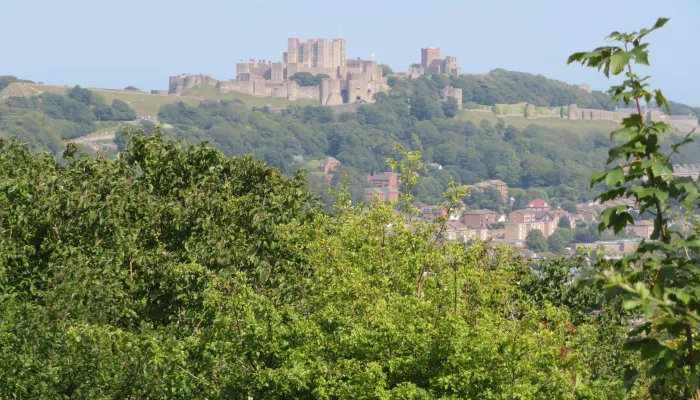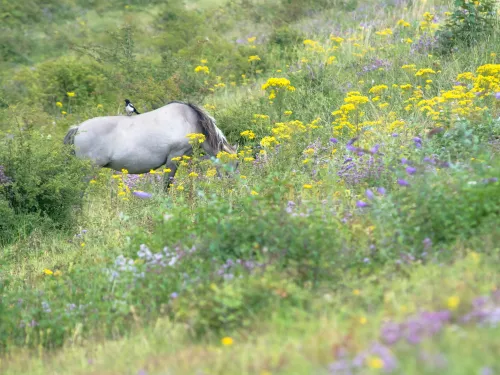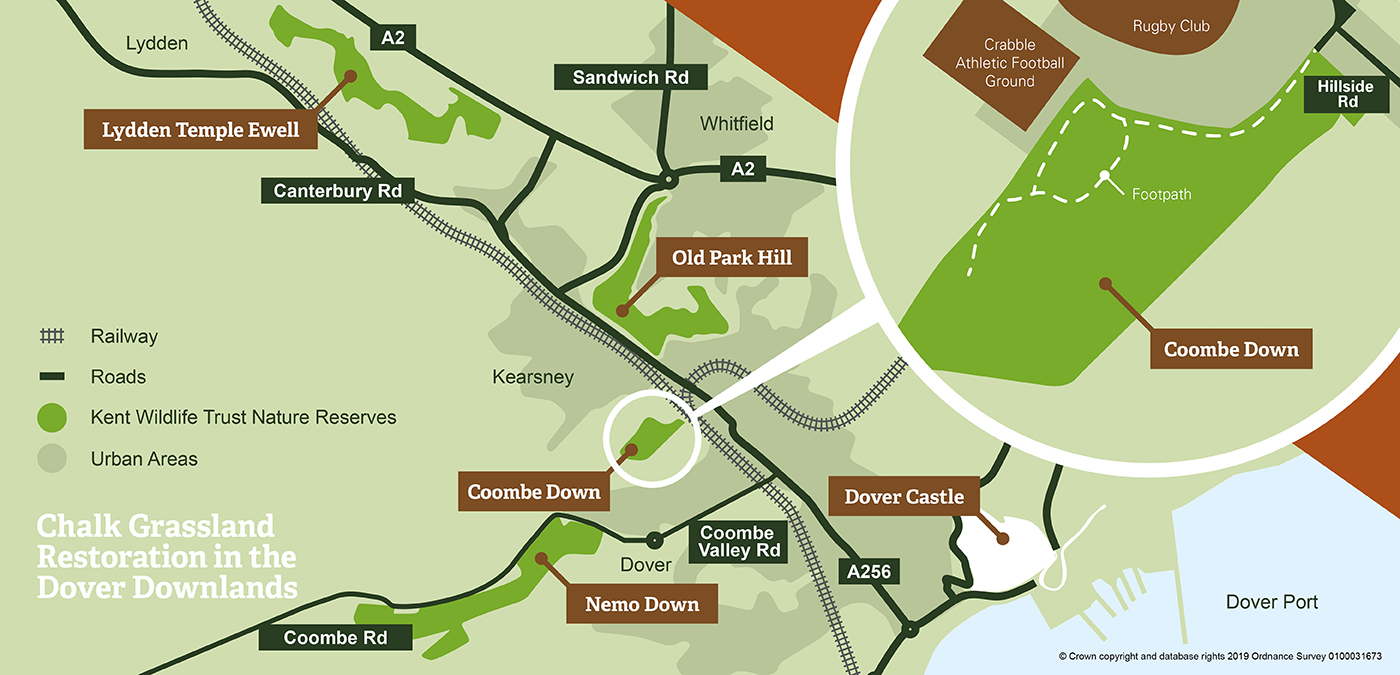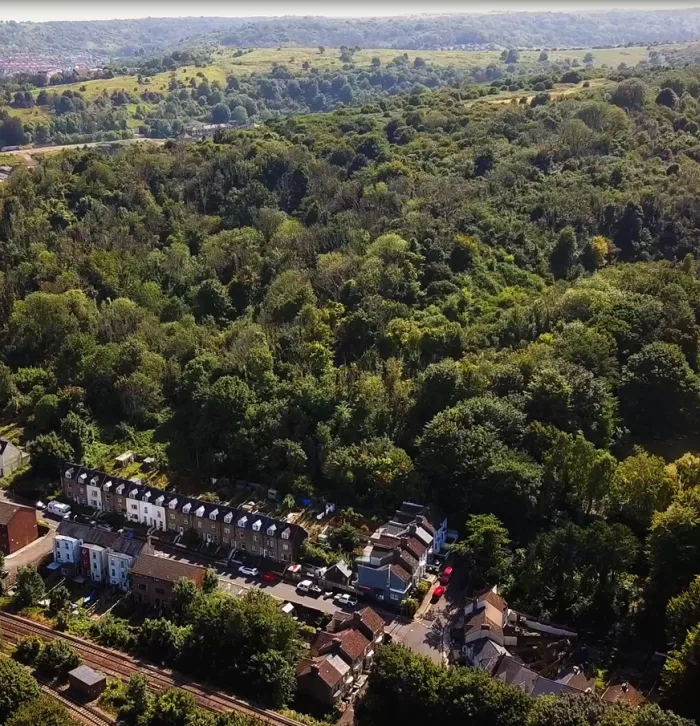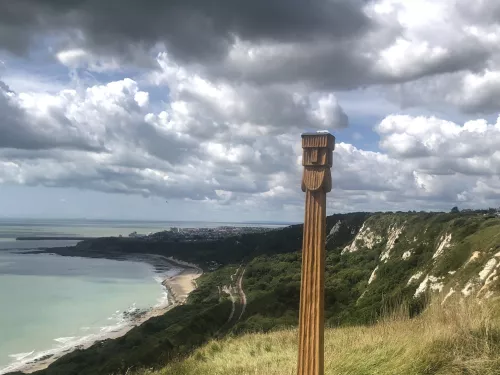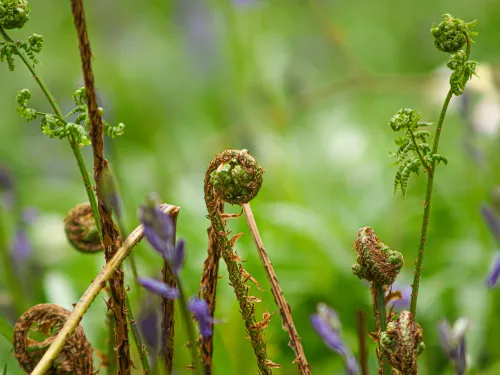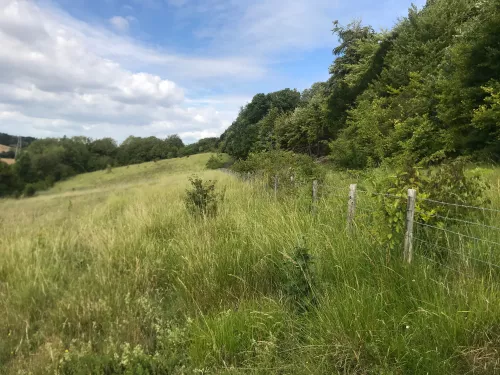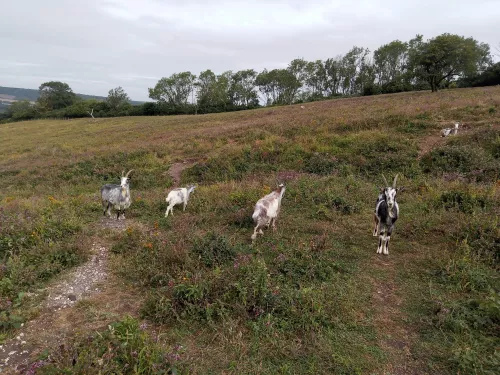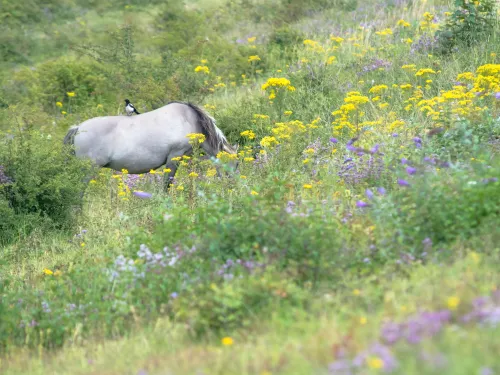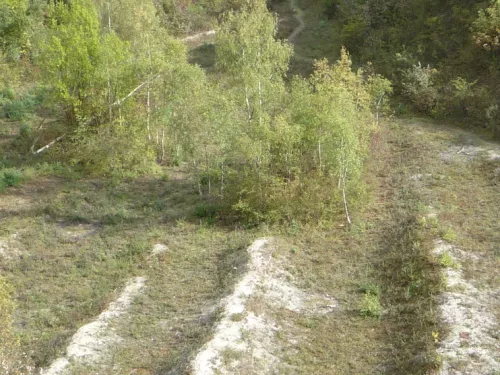The iconic Chough has been used on Canterbury’s coat of arms since 1380, having been taken from Thomas Becket’s coat of arms. Sadly it has long been extinct in Kent after destruction of it's habitat, and persecution.
As the only crow with a red bill and red legs, the all-black chough is easy to identify, but it's harder to spot.
The chough lives on short, grazed grassland and coastal heathland where it probes the ground with its long, red bill for insects, such as leatherjackets and beetle larvae. Acrobatic in flight, it has a 'chee-ow' call which is similar to, but louder than, the Jackdaw's. The female lays three to five eggs and both parents help to raise the chicks.
The chough is about 38-40 cm long, with a wingspan of 82cms and weighs 310 grams.
Choughs build nests in small colonies in crevices and fissures, on rock ledges and cliff faces, and even in abandoned buildings. The Chough is on the Red List for Birds and is a protected species. There are only small coastal populations in Wales, Scotland, the Isle of Man and Cornwall, but we are bringing them back to Dover.
